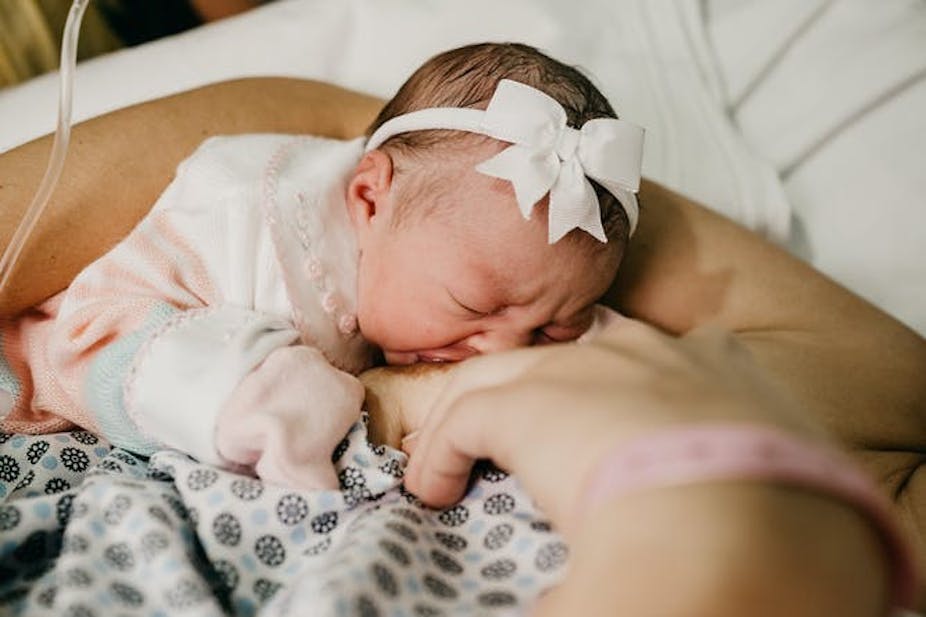This article is published to celebrate World Breastfeeding Week 1-7 August.
When emergencies occur, including in the current COVID-19 pandemic, people want to help mothers and babies. Sometimes they respond by making donations of infant formula. Baby milk companies can see emergencies as an opportunity to use donations to market their products.
Donations of infant formula in emergencies always cause harm because they reduce breastfeeding, increase rates of infection, and place infants in a food insecure situation.
After the Yogyakarta earthquake in 2006, for instance, donations of infant formula doubled rates of diarrhoea in babies. The poorest families are worst affected.
During the COVID-19 pandemic all over the world, well-meaning donations from individuals and organisations have been harming infants. Infant formula manufacturers have sought to mislead parents and health workers about the safety of breastfeeding during COVID-19 and have distributed infant formula against the WHO International Code.
The Infant and Young Child Feeding in Emergencies Operational Guidance and the World Health Organization (WHO) state that breastfeeding is the safest and sustainable food source, and formula feeding should only be done when breastfeeding is not possible and with caution.
In normal situations, WHO only recommends infant formula when there are specific medical indications such as babies with galactosemia or with maple urine syrup disease.
WHO has said that countries must act to stop donations of infant formula in emergencies.
Breastfeeding benefits in emergency situation
Breastfeeding is important at all times, but even more so in emergencies.
Breastfeeding provides babies with safe food and water, and protection from infection. It also helps mothers who are stressed to bond with and provide good care to their babies.
Without breastfeeding, the ability of infants to fight infection is reduced, and formula-fed babies are more likely to need hospital treatment and, when conditions are poor, even to die.
It is for these reasons that WHO has said that women who are infected with COVID-19 should have skin-to-skin contact with their babies after birth, keep their babies close to them day and night, and breastfeed.
Infection rates are low when breastfed
When babies are infected with COVID-19, they rarely become seriously ill and many have no symptoms at all. Even babies who are born prematurely may not suffer serious illness when infected with COVID-19.
There is now also research showing that babies are at little risk of infection with COVID-19 if they are kept with their mothers and breastfed. Research from New York found that of 116 breastfed babies whose mothers had COVID-19 none became ill.
In another study, 666 babies were born to mothers who had COVID-19 and only 28 babies became infected. Babies who were breastfed were not more likely to be infected than those who were formula fed and it was concluded that separating babies from their mothers does not reduce infection rates. Antibodies to COVID-19 have been found in breastmilk which would help babies to fight COVID-19.
Mothers have faced challenges in breastfeeding their babies in the pandemic
Some government and medical organisation policies have said that mothers and babies should be separated and breastfeeding not allowed. These policies have been made without considering the importance of breastfeeding in protecting babies and have been criticised.
Some organisations have now recognised their error and are reversing their recommendations and now support breastfeeding. As time goes on, it is becoming even clearer that even when mothers have COVID-19 they should be encouraged and supported to have skin-to-skin contact, to keep their babies close by them, and to breastfeed.
Other challenges that mothers have faced include the ongoing impact of the pandemic on health services. Pregnant women are having fewer health checks, many are having to give birth without a support partner. After the baby is born, face-to-face support for breastfeeding has been reduced. Grandmothers may not be able to visit and help their daughters with caring for the baby.
These challenges are happening in rich and poor countries.
Australian research found that many mothers found this situation very difficult and were stressed and anxious. When they experienced problems with breastfeeding they were reluctant to go to clinics because of fear of infection or were unable to seek support because services were shut. They often just wanted to have someone to talk to.
In response to the pandemic, some mothers placed a greater importance on breastfeeding because it could help protect their babies from infections including COVID-19. They also saw breastfeeding as protective because it was a secure food supply so they did not have to worry about whether they could buy infant formula.
The Australian Breastfeeding Association found that many women contacted their breastfeeding counsellors for assistance with restarting breastfeeding because of the pandemic. Counsellors were also able to reassure mothers that it was usual for babies to want to feed more frequently in unsettled times and that stress has no impact on milk supply.
Let’s support breastfeeding mothers to protect their babies health
World Breastfeeding Week is celebrated every 1-7 August, and this year’s theme is “Support Breastfeeding for a Healthier Planet”. This reminds us that breastfeeding protects not only the health of mothers and babies but also of the planet.
Formula feeding contributes to water and plastic pollution, land and waterways degradation as well as greenhouse gas emission such as methane (CH4), nitrous oxide (N2O) and carbon dioxide (CO2). In a world where natural as well as human made emergencies are ever increasing, we must support mothers to breastfeed so that they can protect their babies and protect the planet.


